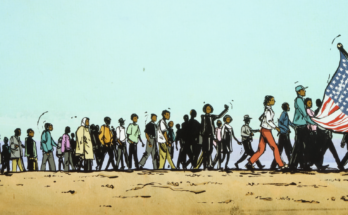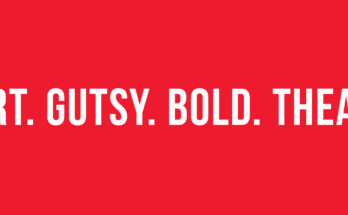The most interesting thing about the new “Picasso to Warhol” show at the High Museum of Art isn’t the fact that pieces are on loan from the Museum of Modern Art’s (MoMA) impressive collection. Nor is it that it features iconic masterpieces by marquee-name artists on display in Atlanta for the first time. Or that it will only be shown in Atlanta and was created by curators from both museums.
It’s that the High’s new show takes work you may be familiar with and creates an entirely new visual dialogue about art, inspiration, exploration, rivalry and friendship using artists that most observers would consider unrelated.
“This exhibition highlights the achievements of some of the greatest artists of the 20th century, and through them we see key developments throughout the history of modern art,” explains Jodi Hauptman of MoMA, the exhibit’s lead curator. “They expanded what art can be. They invented totally new forms of art-making — cubism, abstract expressionism, pop art and surrealism — they reinterpreted portraiture, still life and sculpture. They took on new subjects, making new art for a new world.”
The way Hauptman and her team organized the exhibition was inspired by the fact that some of the artists knew each other. Marcel Duchamp is the one who named Alexander Calder‘s work a “mobile.” Calder had an a-ha moment in Joan Miro‘s studio. Piet Mondrian and Constantin Brancusi were friends.
Visitors to the High not only can see Mondrian and Brancusi’s work presented side by side, they can see how photographs of Brancusi’s studio inspired the way Hauptman’s team displayed his sculptures. They can follow a clear line of inspiration from Duchamp’s films and ready-made installations to Andy Warhol‘s pop-art boxes and screen tests, and see how Miro’s spindly painted lines were reinterpreted in Calder’s metalwork.
Not-so-friendly competition also inspired some of the exhibit’s staging. Large-scale works by Henri Matisse and Pablo Picasso are hung so they may be viewed alone or in contrast to each other. Louise Bourgeois‘ quiet sculptural reflections on motherhood and isolation are an interesting break from the visually noisy and very macho art that comes before and after her. After walking through a series of increasingly frenzied Jackson Pollack canvases, it’s hard not to heave a sigh of relief when you see a room full of Jasper Johns, who sought to distance himself artistically from Pollack’s emotional excesses. John’s large-scale silk-screened reinterpretation of America is a colorful patchwork that is reflected, but not represented, in Romare Bearden‘s rough civil rights-era collages.
“The works of art speak to each other, throughout time,” Hauptman says.
MoMA Director Glenn D. Lowry says it was revelatory to discover that by relocating a portion of their collection to a new city, they could uncover a dialogue between well-known artists that felt completely fresh and new.
“It’s anchored by iconic artists like Picasso and Matisse but is threaded with surprises like Louise Bourgeois, who sings in this exhibition,” Lowery says. “These kind of juxtapositions are invisible at the Museum of Modern Art.”
“Picasso to Warhol: Fourteen Modern Masters,” runs through April 29. Several adjunct programs will be available, such as a fall/winter film series of movies from MoMA’s archives and ArtLabs for Teens, a series of four-week art-making workshops on Thursdays and Saturdays through Nov. 12.
Before you go, download ArtClix, a free mobile application that’s available for both Android devices and iPhones. With the app, you can take a self-guided tour of the exhibit, snapping photos of works to reveal audio snippets and historical information. Users also can engage in real-time dialogue with other visitors and museum staff through ArtClix’s community boards, post images on social networks and send postcards to friends.
Speaking of friends, MoMA’s Lowery and Michael T. Shapiro, the High’s Nancy and Holcombe T. Green Jr. director, have been friends since college. They began talking about forging an artistic exchange between New York and Atlanta during the 1996 Olympics; since then the High has displayed MoMA pieces in four exhibits. The High’s successful, three-year collaboration with Paris’ Musee Louvre inspired inspired even greater ambitions.
“Picasso to Warhol” is the first of what the two museum directors say will be several high-profile co-productions between MoMA and the High, so stay tuned. The second will be unveiled this time next year, and a third is planned for fall 2013.
For more information, visit high.org.



